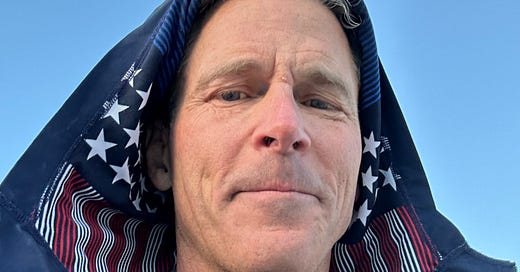It ain’t what you don’t know that gets you into trouble.
It’s what you know for sure that just ain’t so.
- Mark Twain
We changed the game from finding the errors in others, to noticing errors in our own thinking.
Most of our errors are harmless - our mistaken beliefs roll along without causing any problems.
But some of our errors could harm us, which ones are these and what might the signs be?
Let’s back up a bit.
The way I live my life - open, no secrets, subject to criticism - has been arrived at by noticing what leads to ruin. Beliefs that can bite us in the butt are the dangerous ones.
How might we identify these beliefs?
Anxiety
Breakdown, Illness & Injury
Relationship Failure
Anger
Ill Health
Drama
The above are red flags. Warnings to change.
But it is difficult to change when we don’t understand the belief system that is driving our behavior.
If…
I am frequently sick
Lose friends over small details
Am constantly anxious
Experience divorce
Have a body that breaks down
Experience huge swings (body weight, emotions, energy)
Have metabolic syndrome
…then there is something in my belief system that’s nudging me towards ruin.
As a young man, I had to experience severe setbacks to be willing to change my approach. If you’ve noticed a setback then consider yourself fortunate (my younger self would fail to see the warning signs). There is useful information contained in setbacks. It’s a signal that change is required.
Atomic Habits is a great resource for driving positive change. I asked Grok for a summary (below).
These methods work great when our belief system is on target. However, when our values are leading us towards disaster, they don’t help.
Getting better at sleepwalking towards ruin is not a win.
Same thing with changing peers and/or environment. If we don’t understand the root values nudging our choices, then we’re unlikely to choose well.
Below are some things I believe. My life is shaped by acting on these beliefs.
Daily exercise is good.
Stay away from angry, or unstable, people.1
One positive step, daily.
Share experiences in my best environments.
Build (the library).2
None of the above get me into trouble. Where I’ve run into difficulty is when I’ve been distracted by seeking external validation, specifically when achievement became my identity.3
That was my story.
For you, consider what aspects of identity might be resulting in the red flags that appear in your life…
Anxiety
Breakdown, Illness & Injury
Relationship Failure
Anger
Ill Health
Drama
As Mark Twain noted at the top, there have been core elements of my identity that I knew for sure that were completely incorrect.4
If we can see this in a single area of our life it can unlock better thinking throughout our lives.
Start by:
Noticing a belief that led you to a bad outcome.
Write it down.
Remember the last time you changed your mind on something.
Write that down too.
If you loop this process then you’ll surface beliefs and demonstrate your ability to change your mind. This is incredibly powerful.
Hardly anyone has a clear understanding of what drives their actions and gives themselves the freedom to change their beliefs.
There is discomfort around changing our minds and admitting we were wrong. Start by admitting it to yourself. Once you get in the groove, you’ll see it’s empowering.
Values Drive Beliefs
Beliefs Drive Actions
Actions Drive Outcomes
What’s Your List?
Unsure of your values?
Write. Try this prompt for your journal => I need more…
Notice. The external traits of people for whom you make an effort.
If we inconvenience ourselves for someone then we are attracted to an aspect of our perception of them. What is that aspect?
The “need more” prompt surfaces a couple things…
The list gives insight into things we think will make us happy. By making those things salient, we can work with them over time. Get out there, do work, achieve the things on the list…
Does achieving our list satisfy? If we’ve constructed (or inherited) a value system that doesn’t work then we want to notice ASAP (ideally before we torch our relationships, get sick, deal with chronic anxiety…).
Identity Diversification As A Hedge
We each need to believe, and belong, to something. Without belief we fall apart.
Part of avoiding ruin is creating options with respect to in-group identity. Practically speaking, it’s useful to have the option to drop a subculture, or peer niche, when we see it isn’t working.
Choose Wisely.
Next time we will run through how my information funnel has shifted over the last 20 years.
When I can’t avoid a situation, my response is => be polite, do the minimum.
As a writer, my role is to write. Related: I enjoy reading, learning and teaching.
12 years ago, I wrote a piece about my cultural environment, Vanity and Victory. Still true today. Are you aware of the environment of your subculture (both online and in real life)?
A common one… being skinny is better. Related… being jacked is better. How does your subculture define its ideal member?








Thanks Gordo, have thought a lot about your post this week with a sore arch emerging two weeks before UTS 50 (a repeating cycle, easy to track down to beliefs) I think some of the challenge is, even after you’ve identified the cycle and the belief, you need to have a belief ready to replace the one you’re trying to address, and most importantly it must feel safe. Dancing on the edge of this and watching with interest…
This “Notice. The external traits of people for whom you make an effort” 👏